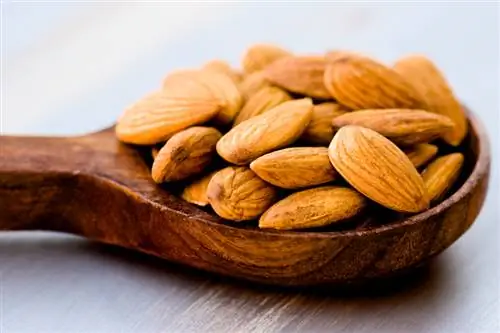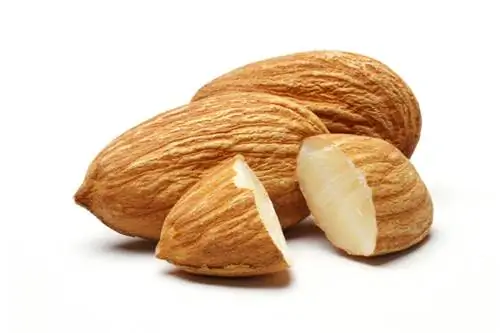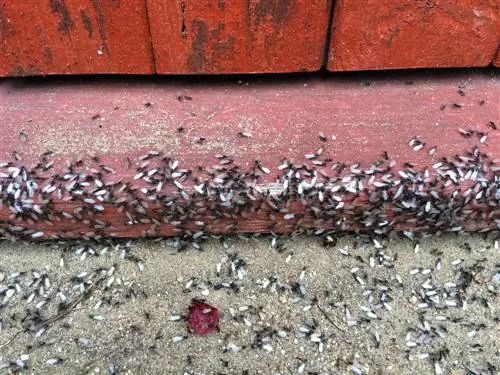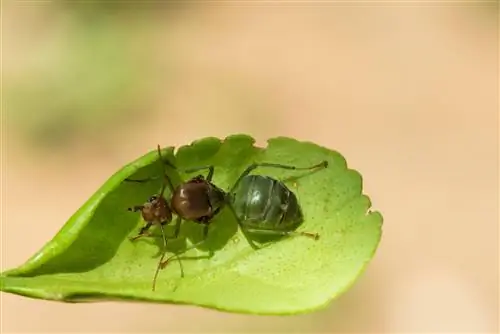- Author admin [email protected].
- Public 2023-12-16 16:46.
- Last modified 2025-01-23 11:20.
You can always read bad stories about the nutritious almonds. But what exactly is behind it? We'll reveal the big secret with the help of a few facts.
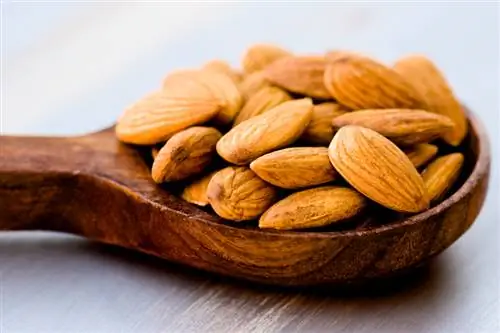
How dangerous is hydrogen cyanide in almonds?
Sweet almonds contain only very small amounts of amygdalin, while bitter almonds contain 3-5% amygdalin, which is converted into toxic hydrogen cyanide in the body. Eating 50-60 bitter almonds can be fatal for adults and 5-10 for children.
Important ingredients of almonds
Almonds are unique sources of energy. They have become an integral part of our menu. In particularly high, he alth-beneficial concentrations they contain:
- calcium
- Vitamins, especially vitamin E
- unsaturated fatty acids
Well-founded studies show that daily consumption of almonds can prevent cardiovascular diseases.
Not all almonds are the same
It is important to clearly distinguish between sweet almonds and bitter almonds. Thanks to a long history of successful breeding, sweet almonds contain no traces of amygdalin.
Sweet almonds only contain a dwindlingly small amount of amygdalin in isolated cases. However, this cannot have a negative effect on the human organism. For this reason, they are very popular when preparing culinary delicacies.
In contrast, bitter almonds contain three to five percent amygdalin. During the digestion process, this is transformed into, among other things, highly toxic hydrogen cyanide.
Attention: bitter almond
As a rule of thumb:
- One raw bitter almond per kilogram of body weight is very harmful.
- Eating 50 to 60 bitter almonds can cause death in adults.
- Just 5 to 10 bitter almonds are life-threatening for children.
Natural protective function
These facts can be frightening. Nevertheless, nature has also taken precautions here with a quasi-integrated protection system. Normally, we humans, whether big or small, are not particularly fond of very bitter foods. Our body has consciously integrated these defense mechanisms.
Now it is mainly up to us to listen to these signs. We should give our children these valuable, natural skills.
Bitter sweet almonds are dangerous?
If we look closely, we always come across sweet almonds that taste very bitter. This is because, despite successful breeding, every almond tree has a “buck” when it comes to its fruit. This contains a small amount of amygdalin.
Due to the taste, we usually instinctively avoid eating this somewhat bitter almond.
Tips & Tricks
To be on the safe side, allotment gardens should completely avoid growing bitter almonds. In addition, nature can be explored together with children for “good and evil”. Education helps to protect yourself and others.

